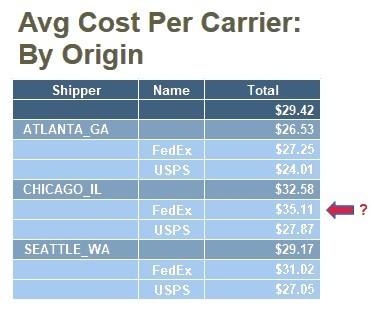Asking the right questions about shipping metrics can build business-changing intelligence.
This Expert Exchange is brought to you by Clint Boaz, Senior Sales Engineer for ProShip Multi-Carrier Shipping Software.
A simple trip to the store with my five-year-old quickly turns into something like a game of Twenty Questions. “Why is that backhoe on the street? Why do they need to fix the street? How long will it take them to fix it?” While sometimes this feels worse than being interrogated by Customs, as any parent knows, it’s this insatiable curiosity that helps children learn about the world around them.
When it comes to your shipping metrics, are you as curious as a kindergartner?
Your shipping system is a goldmine of data that can be excavated and turned into actionable intelligence. Think about it for a moment. Every order that leaves your warehouse passes through your shipping software for final shipment labeling. During this process, the shipping system collects data about your shipments:
- How much did we ship?
- Where did we ship from?
- Where did we ship to?
- When should our shipments arrive?
- How much did it cost us to ship them?
- How were they packaged?
- What carrier service options are being chosen?
…and so on. With ready answers to these questions, you can learn what steps you need to take to reduce costs, improve throughput and enhance customer satisfaction.
But how do you turn shipping data into useful information? First, you will need to integrate shipping software so that it posts the resultant shipping data to a useable data store. Having a shipping system with the flexibility to post the data that you need where you need it and in the format you need it is critical.
Next, you will want to organize this data into a readable and useful format. This can take the form of simple tabular reports or visualizations like charts and graphs. You can do all of this with well-integrated shipping software and a good set of data analysis tools. Or better yet, invest in a shipping system that contains an embedded data model for shipping analytics and advanced reporting and data visualization tools.
As an example, consider the following tabulation of average parcel shipping costs provided for the overall business, by origin shipper, and by carrier (right).
You might ask: Why is the average FedEx shipping charge so much higher when shipping from the Chicago facility? Are the employees there not packing as efficiently, resulting in higher-than-expected dimensional charges? Is this result expected or unexpected?

Consider another example – a heat map showing the destinations for parcels shipped from the Seattle facility:

You might ask: Given that we have a facility in Atlanta, why did we ship almost 62,000 packages this year from Seattle to Florida? Is this an inventory placement problem? Is there a glitch in our Warehouse Management System?
You may have very specific business quandaries that you need to solve, such as why transportation expenses have spiked in the last year or what might be next year’s projected growth in shipping volume with each carrier you use. Perhaps you need to measure how well your business is doing on Key Performance Indicators related to shipping, like keeping the average price per shipment down or meeting customer delivery expectations. Or you may need to build a set of reports for continuous guidance on topics like carrier contract negotiations or ecommerce campaigns. If you are not using your shipping system as a source of information, you are overlooking a valuable resource that can build your intelligence about your business and help you improve your operational efficiency and profits.
As you begin to realize the power that is contained in your shipping data, start working with it more to find other creative ways to put it to use. The same way a curious kid mixes watercolors together to see what new colors can be created, start mixing and matching data sets and filters to learn what your shipping data can tell you about your business.
Your shipping software holds answers to countless questions that you’re anxious to ask about your operation. So go ahead and indulge your curiosity. You might just improve your bottom line.

 Back to Blog
Back to Blog






